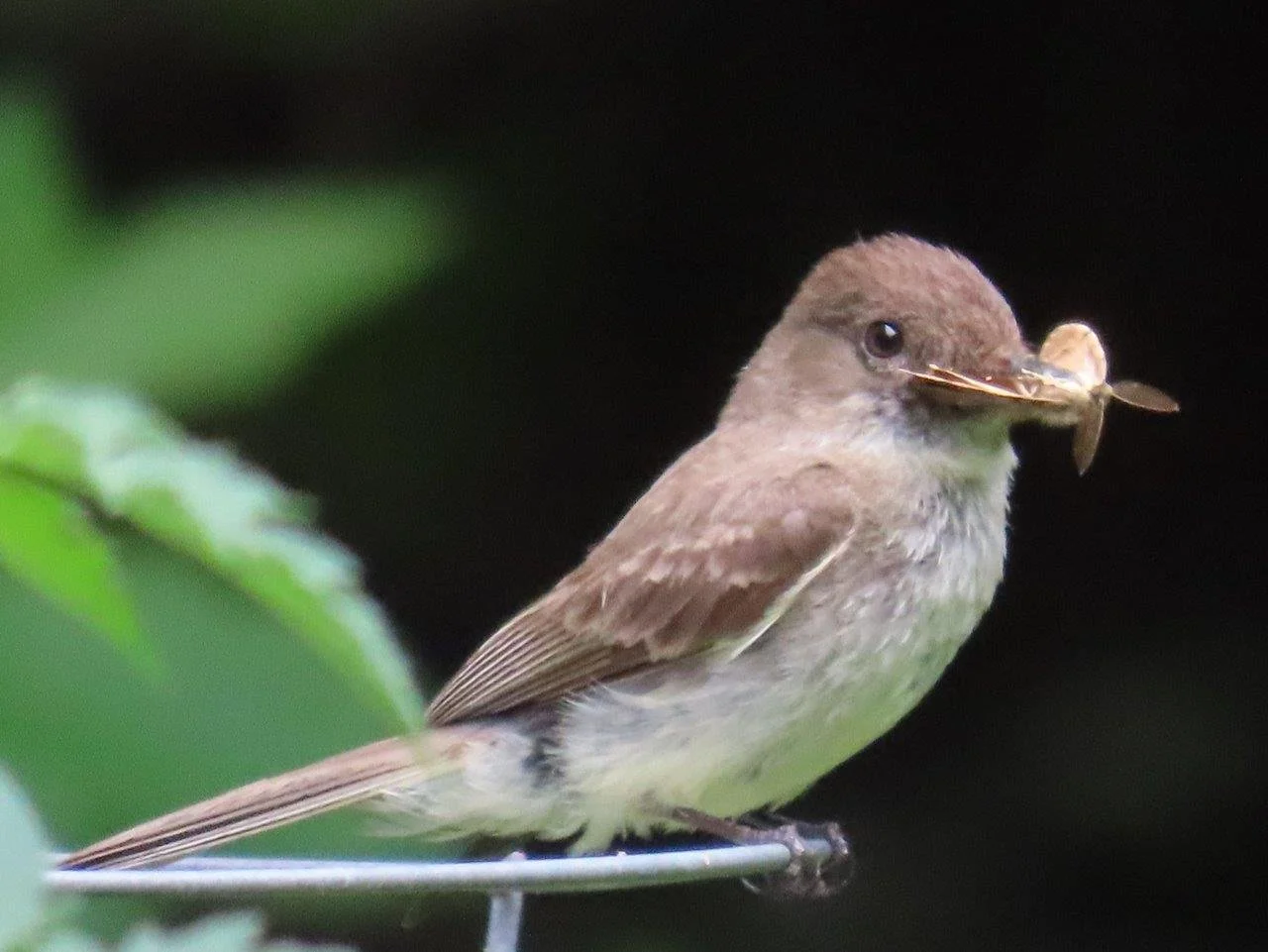Spongy Moth Update
Bird eating a spongy moth.
AUGUST 2024 UPDATE
As predicted, the spongy moth population exploded in spring of 2024. After a fair amount of munching (and associated pooping), the caterpillars were infected by a fungus or virus that killed most of them by the end of June.
Mike Fargione, Manager of Field Research & Outdoor Programs at the nearby Cary Institute of Ecosystem Studies, explained why this is good news. “The result was few females survived to become adults and lay eggs. Now, a small number of viable eggs are present, and many of these will likely be destroyed by egg parasitoids before they can hatch next May.” He suggests that if some homeowners in Clinton didn’t see a collapse this year, they can expect to see it next year.
As for the trees, many of them didn’t seem to fully leaf out after being defoliated this year, but we have been lucky to receive an abundance of water that should help in the long run. However, Fargione explains that some trees may be irreversibly damaged, and suggest homeowners consult an arborist on how to best care for any weakened trees.
To stay up to date on the latest news, visit Farigone’s page: Spongy Moth Chronicles.
JANUARY 2024
In 2023, the Town of Clinton and areas in adjacent towns experienced a severe outbreak of Spongy Moth caterpillars that defoliated (ate all the leaves on the trees) in early spring. In June, the trees looked as bare as winter, and if you took a walk in the woods the sound of caterpillars pooping sounded like rain.
We are lucky to have the Cary Institute for Ecosystem Studies (IES) as our neighbor in the Town of Washington. Scientists from IES have been studying the Spongy Moth (formerly known as the Gypsy Moth) for decades.
In January 2024, IES hosted a virtual webinar to let us know what’s ahead for us this year with the infestation and what to do about it in your yard. Because the infestation is so large and the caterpillars drift through the air on web-like silky strings, the treatments that typically come to mind are not effective. Scraping the egg sacks off your trees, using sticky tape or burlap bands around the tree, and spraying trees with pesticides will not help in most situations. More caterpillars will just swoop in and start munching away.
Cary Institute scientist Clive Jones discusses some exceptions to this in his talk, but says the best (and most cost-effective) approach is to let nature run its course. A naturally occurring virus and fungus will likely kill the caterpillars and should bring the population back into balance either this year or next at the latest.
Jones explains, “So the best guess for Cary is that in 2024 we will have an NPV[virus]–induced collapse, plus or minus the fungus depending on the weather. Whether or not there'll be a lot or a little defoliation will really depend on how fast the virus moves through the population. If it moves slowly, there'll be complete defoliation. If it goes through fast, there'll be incomplete defoliation. And if that doesn't happen, and the density continues to rise or stays at the level it is, then a viral collapse in 2025 has a much higher probability, because by then food limitation and stress will be kicking in.”




